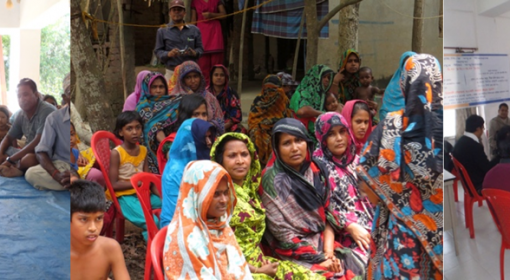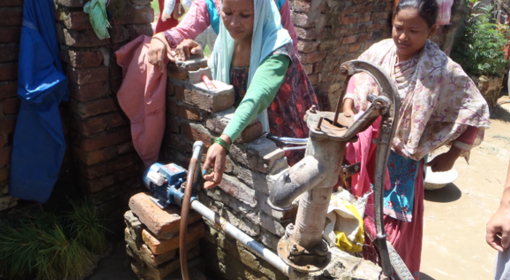The definition, advantages and main steps to apply water systems’ asset management
by Aldo Zamarroni Peralta and Judith de Bruijne
Practica Foundation
Under the flag of the WASH Alliance International, Practica Foundation has started a limited 2-weekly blog series on Asset Management of small-scale water systems. Our second post deals with the definition, advantages and main steps to apply water systems’ asset management. The experiences of Sudarshan Rajbhandari, -the Programme director of CIUD, a local NGO in Nepal-, are being shared to understand what the Asset Management methodology means for the regular activities of water managers. Happy reading!

The last blog entry dealt with the main constraints the WASH Alliance International has encountered while working on SDG 6 in the global South. Based on its assessment, the WASH Alliance International felt that Asset Management is potentially one of the best methodologies to improve the sustainability of rural and peri-urban water systems. However, the question arises: What is asset management and how can it be useful for both, managers, and users in their regular activities?
Sudarshan Rajbhandari, the Programme Director from Centre of Integrated Urban Development (CIUD, a local NGO in Nepal), shares his instant reaction when he heard about this concept:
‘The first time I heard about asset management I was quite surprised about it. It sounded like all the pieces of the ‘water system management’ puzzle came together.’
‘Water supply systems in Nepal are mostly constructed through funding from donor agencies, and with contributions from local communities. Once the systems have been constructed, some local NGOs take up the task to provide capacity building trainings on maintenance and operation. However, these learnings are put into practice without a long-term planning. Problems are only addressed as they emerge which leads to temporary or quick & cheap solutions, which may not be sustainable in the long run.
Sudarshan agrees that Asset Management is a comprehensive framework that helps to combine all the concepts already being considered in the context of Nepalese water systems. Applying this methodology does not only strengthen operation technically, but also financially. It ensures water systems are functioning continuously.
Defining Asset Management:
‘The activity of achieving and maintaining the agreed water delivery needs (=service level) during a sustained period of time at a certain cost’
Main components of an AM plan
Ideally, asset management is applied during the planning and design phase of any new water supply system, but it can also be used to optimize or rehabilitate existing infrastructure. It consists of three main steps.
Step 1: Maintenance plan based on a service level agreement
- Asset inventory & Risk Assessment: provides a clear overview of the system components and their associated risks. It shows their position, current state, expected lifespan, most critical aspects and common ways in which the assets can
- Service level agreement: entails a participatory process of establishing an agreement on the service level (the amount and quality of water to be provided, to whom, at what time, for how long and under which specific conditions). Special attention should be given to the fundamental starting point of water allocation- being inclusive. Ensuring water provision to the community as a whole (including poor and disadvantage).
- Tariff definition: With the previous information (service level and asset inventory), the yearly maintenance and replacement costs can be estimated. Setting a baseline for the water tariff agreement between users and managers. Users are often willing to pay more for higher service levels. All groups should be included in the discussion where differentiation in tariffs of certain groups can be an option.
- Finally, the maintenance plan can be developed, with detailed information about the income and costs of operating the system.
Step 2: System optimization iterations.
By comparing the cost estimation with the estimated income one can optimize the system. For example, when a piped system has a higher cost than income, one can either lower the service level or raise the water tariff to come to a sustainable business case. With these insights, the involved actors can make iterations until everyone agrees with the service level.
Step 3: Monitoring and adjustment.
The third step is to monitor the performance of the system (key parameters encompass water quantity, quality, affordability, reliability, accessibility, and more). This helps to compare prognoses with actual data. For example, are income and expenditures as expected? And if not, are adjustments required to ensure a sustainable solution? Or even better, can the service level be increased for the same tariff?
To close this post, it is key to consider Sudarshan’s vision on water systems’ operation for the coming years.
‘You cannot manage something that you do not understand’
He believes Asset Management is a key methodology to fill the information gap and increase the technical and financial operation of rural and peri-urban water systems. Of course, managers need different tools to implement asset management. In the next posts, the tools being developed by the WASH Alliance International, their conceptualization and their main challenges will be shared.
Special thanks go to Sudarshan from CIUD for sharing his experiences with Asset Management. This document was developed by Practica Foundation as a member of the WASH Alliance International, partner of the WASH SDG Consortium. For more information please contact: info@practica.org or visit www.practica.org




